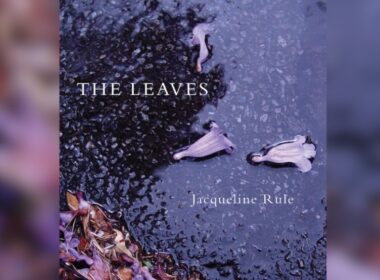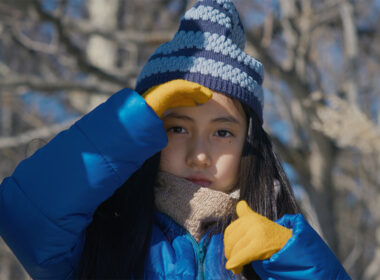The New Boy
According to Warwick Thornton, he wrote the script for The New Boy even before his first feature, Samson and Delilah. In the final product there is still the kernel of an angry young Kaytetye artist battling against the internalised trauma of post-colonial Australia’s systemic racism.
Young Thornton parked the script (maybe because it is a more complex endeavour), grew older, softer, and revisited the story with a fresh new perspective. Though I wish the careless, irate young Thornton could have had his say.
The New Boy starts with the titled child (brilliantly played by newcomer Aswan Reid) captured and sent to a remote monastery. It is Australia in the 1940s; the monastery shelters orphan children and is run by Sister Eileen (Cate Blanchett) with the support of two indoctrinated Indigenous people – Sister Mum (Deborah Mailman) and the helping hand for all purposes, George (Wayne Blair).
The Boy is entirely detached from the Western lifestyle. He does not speak the language, rejects eating food with utensils, and prefers to sleep on the hardwood floor. He observes the life around him with the matter-of-fact perspective of a person unphased by difference or even interested in changing it. He is, above all, an unintentional rebel against post-colonial power, religion and authority.
On the other hand, Sister Eileen is battling her own disruptive demons. She hides from both the community and the audience that there used to be a priest in the monastery running things, but he passed away in mysterious circumstances. Against her own religious upbringing, she evades from succumbing back to the patriarchy.
The period setting is alluring, and Thornton approaches the story in a typically Western tradition. But, little by little, he lets other different elements take over. The Boy, for example, has a magical power in the form of a little sprite that offers him warmth and can cure people. It is a blatant metaphor but an important one, where this mystical touch represents in him the connection to the land and his tradition. To Thornton, it expresses his desire to break Western art’s stifled constraints and find the ’storytelling traditions of his ancestors.
The two cultures clash for most of the film and while it sometimes works, it can often look like Thornton is repeating an idea just one too many times. It leads to a fantastic sequence where the Boy takes Jesus’ statue down off a crucifix to hang out with it like a punk rock version of Weekend at Bernie’s. In this moment Thornton finds that sweet spot where his cultural sensitivities have come to terms with each other, while at the same time making the sharpest commentary on the destructiveness of religious colonialism.
Aswan Reid projects a child-like unruly excitement, which is the only way for someone to stand out next to a Cate Blanchett, who is expectedly in-form. There is a great moment where Blanchett has to pretend to have an argument with the priest to convince a courier that there is a man in the area. It is a powerhouse performance, but almost stolen by Reid’s uninterested reactions in the background.
Yet I wish Thornton had been more acerbic. The New Boy takes a long hard look at the slow destruction of Indigenous culture. Because of that, it did not have to tone things down.
I can see how it will be difficult to digest by audiences used to traditional ways of storytelling. There is something different here, and not everyone is prepared for it.
Verdict: 4 out of 5
For everyone who believes in one of the most exciting voices in Australian cinema and those who know that colonialism destroys cultures.

Other people’s children
The reason why the French mastered most genres comes down to how producers and filmmakers approach a project. Say Hollywood wants to make a drama about a woman dealing with her biological clock expiring soon. At the same time, she starts a relationship with a man who already has a daughter. American producers would create a committee to present to the filmmakers a series of elements that the film would need. Repurposing elements from other films, here removed from their original context to now be included in a different work just because they trust in market research more than the filmmaker’s instincts. In France, the producer ensures the script is well written and then lets the artist cook.
Other People’s Children is, thankfully, the latter. Now. That is not to say every French film is a paragon of artistic merit. But it is funny their worst films are the ones that try too hard to please all markets. The majority keep the formula straightforward – make sure the script is tight and let your actors embrace their characters.
Rebecca Zlotowski writes and directs this pretty sturdy film labout a teacher, Rachel (Virginie Friedmann), who is told by her doctor that her time to bear children is running out. She then puts all her eggs in the basket of Ali (Roschdy Zem), who happens to already have a young toddler, Leïla (Callie Ferreira-Gonçalves), from a previous relationship with Alice (Chiara Mastroianni).
It is a strong subject Zlotowsk knows does not need cheap drama tricks. Rachel doesn’t trick Ali or find a ploy in her race against time. The ticking clock is there, and the audience feels it. Still, the relationship develops like a relationship between two adults does. It is just the dynamic is disrupted by the inclusion of a child.
Rachel loves Leïla and wants to please her at all times. I remember when my aunt remarried and how her new husband had to react around her young son. There are ups and downs, caring and sad moments. I can imagine how a person can feel empty if a child who doesn’t understand adult dynamics suddenly says, “I don’t want her in the house anymore”.
The film works because Zlotowski remains true to her character’s intentions. That moment when Leïla unintentionally hurts Rachel (because that is what children do with no malice) hits like a hammer in the chest. Still, Zlotowski knows not to linger too much around it nor give it more significant importance than the stark reminder that Rachel still does not have her own children. It gets harder to digest as their relationship becomes the central one, over Rachel and Ali, and the impending possibility of Rachel not being part of Leïla’s life a heartbreaking idea.
Friedmann is an interesting choice for Rachel. Her career had been mostly cash grabs in middle-of-the-road romantic comedies until her breakout role in Paul Verhoeven’s Benedetta. She holds her ground reasonably well here, even if some naturality is lost in the more dramatic scenes. Especially when she is next to Zem (you may remember him from this year’s The Innocent), whose performance is usually more raw.
Other People’s Children is a good film that only fails for not having the ambition to explore its themes deeper. But there is a purpose even for that – it’s bound to resonate even more with those going through the same ordeal. And while it doesn’t offer a solution, it projects their fears and traumas.
Verdict: 3 out of 5
For those who can feel the clock ticking away and everyone looking for solid and entertaining dramas that will not ruin the rest of their day.




